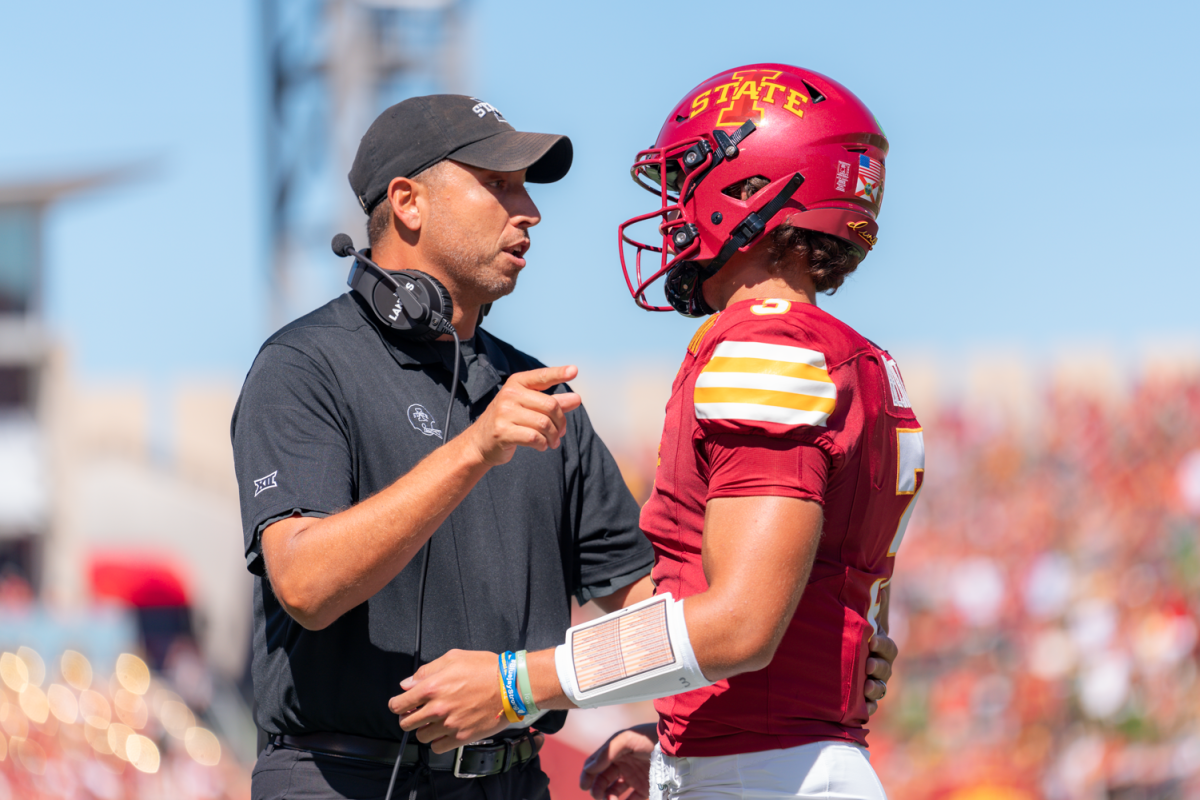Soy road markers created to prevent accidents
June 27, 2001
It’s a dark, stormy night in Iowa. The rain is coming down in buckets and the driving visibility is substandard. The highway lines on the road disappear into the night, and it’s difficult to tell how to keep the car on the road.
Drivers being blinded by rain is typical during the rainy seasons in Iowa, but researchers at Iowa State, with help from the Iowa Department of Transportation, think they have discovered a way to alleviate the problem with an agriculture product familiar to the state, soy.
Larry Mesenbrink, highway marking supervisor for the DOT, said when a person drives at night, the light from vehicle headlights is reflected back to the driver’s eyes from markings on the road.
He said small glass spheres are embedded in the roadway paint, allowing light to be reflected back to the driver to guide the vehicle down the roadway with reference points to locate the center and edge of the road.
Mesenbrink said the system works well in dry conditions, but water disperses the reflected light, preventing it from returning to the source and to the driver’s eye, making to difficult for the driver to see the markings.
He said raising the markings above the water appears to be the solution to the problem. Several states have used raised pavement markers for many years.
Mesenbrink said the standard raised pavement marker is made from cast steel with a plastic insert to reflect light. Due to snowfall in winter months, the snow belt states do not recommend the markers.
During the snow removal process, markers can be ruined or cause damage to the snowplow.
After reading about research done at Iowa State with soy protein plastics, Mesenbrink said he decided to present his idea of making a better form of the raised pavement marker.
Perminus Mungara, assistant scientist in food science and human nutrition, said Mesenbrink approached the department with the idea of making soy protein-based raised pavement markers to replace the expensive metal, non-biodegradable petroleum-based plastic ones.
Mungara said that the major component of the markers is soy protein and the minor components are additives that help to lower moisture sensitivity of soy protein.
“The main advantage of soy protein-based markers include the fact that they are from a renewable resource, they will be inexpensive because of low-cost soy protein, will easily attach to the road with glue, are easy to remove by `blading’ them from the road and pose no harm to tires,” he said.
“The metal and plastic [raised pavement markers], besides being expensive, require more elaborate installation and need to be removed before winter because they can damage snow removal plows.”
Mungara said the markers are being designed to last through the spring and summer months.
“We have not determined how long the soy plastics would last after their useful life of four to five months, although biodegradation depends on the atmospheric moisture content increasing with an increase in moisture,” he said.
Mungara said constantly changing weather, including heavy rains, high temperatures and humidity, can adversely affect the performance of soy plastics.
“The research is ongoing, and there is a lot of work that needs to be done to produce [raised pavement markers] that will meet the challenge of harsh weather conditions,” he said.
Funding for the research is supported by a grant from the Iowa Soy Promotion Board.
After the group comes up with a final product that has been thoroughly tested on highways, the technology will be sold to industries for commercialization of the products, Mungara said.






